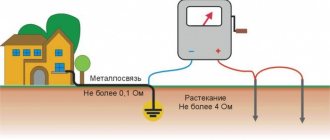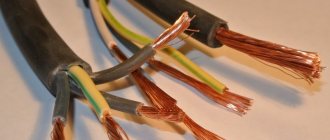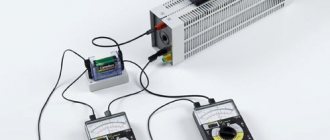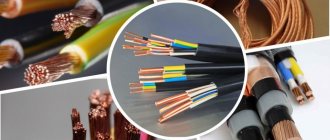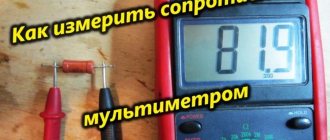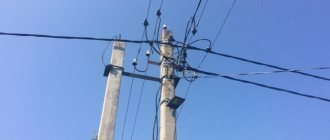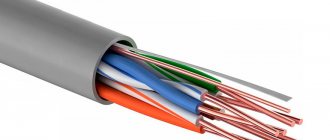A pressing issue for owners of country houses and dachas is the question of the best heating for a private home. It is often difficult to decide on the heating option: electric, gas, water, air. This is due to the efficiency, as well as to the fact that it is more economical and expedient to install. I also often worry about the question of which heating devices to choose: radiators, convectors, heated floors or anything else. Let's look at each question in detail.
Engineering communications service Heating, water supply, drainage, sewerage systems
around the clock tel: 8
INSTALLATION, REPAIR, MAINTENANCE, MODERNIZATION, REPLACEMENT
The best home heating
Gas heating at home
One of the most inexpensive options is gas heating, but only if gas is supplied to your land. With gas heating there is no dust, dirt or soot. A gas boiler should be selected depending on the heated area. Boilers come in low, medium and high power. Gas boilers are equipped with devices that ensure safe operation. But there is always a danger of explosion if used incorrectly, or gas poisoning.
For residents of Russia, gas is the best option for heating a private home due to the most affordable price. An important factor when installing a gas facility is a large number of permitting documentation.
Pros and cons of solid fuel heating boilers
Solid fuel boilers use solid fuel: fuel briquettes, pellets, firewood, coal. They have relatively low heat transfer. In order to properly heat a large house, you need to spend a large amount of fuel and your own efforts. In this situation, the fuel will burn quite quickly in two to four hours.
At this point in time, there are long-burning boilers. Fuel can be loaded into them twice a day, or even once every 30 hours. But these boilers also have their drawbacks, for example, low efficiency (70%).
There will also be a need for auxiliary devices - this is the arrangement of additional traction in some cases or a heat accumulator. Don’t forget about the positive components of solid fuel boilers. They work on all types of solid fuel and anything that can burn. It is not difficult to obtain such fuel at a reasonable price. Solid fuel heating is the best in areas where civilization has not reached and gas supply will not be available soon. And if on top of everything you have a big house.
General concepts and definitions
The soil properties that allow current to conduct depend on the structure and content of various components. The upper soil layers at a depth of 20 to 25 m have a predominant influence on the resistance of grounding conductors. Insulators in the form of silica, alumina and limestone are forced to act as a so-called conductor. soil solution where salts and moisture circulate between the solid parts of dielectrics. This causes the occurrence of ionic conductivity in the soil, and it is distinguished from the electronic conductivity of metals by providing greater resistance to electric current.
The corrosive activity of the earth is its ability to undergo destructive physical and chemical interactions with metals. Humidity, porosity, acidity and permeability of the soil, the presence of organic compounds and bacterial waste products, mineralization, and the quantitative and qualitative composition of electrolyte salts can increase or decrease this activity.
Soil electrical resistivity, or simply resistance, is denoted by the Greek letter ρ and defines properties regarding electrical conductivity. It characterizes the ability of the soil to resist the movement of electrical charges (current flow) in a conventional conductor having a cross-sectional area of 1 square meter. meter and length 1 meter. The unit of measurement for the indicator is Ohm m.
To determine the value of soil resistivity, two main methods are used:
- Test electrode method (used in the design of single grounding devices). To do this, make a sample corresponding to the dimensions of the future grounding installation and immerse it in the soil being tested. Then a pair of auxiliary electrodes is placed there and the resistance to current flow from the control device is measured.
- Four electrode method. They are lowered into the ground at a distance of 2 to 4 meters from each other to a depth of up to 1/20 of this distance. The value measured in this way corresponds to the depth to which the electrodes are spaced.
There are also special high-precision instruments for analyzing soil activity. They allow you to work not only in laboratory but also in field conditions.
What is the best way to heat?
There are as many opinions about how to heat a house as there are people. Some people prefer to heat with electricity, some with gas, and others with coal. Let's consider each option.
Coal is used in areas where there is no gas pipeline or as a backup type of heating. When burned, coal emits a large amount of smoke and soot. It has low humidity levels. This property ensures the release of high temperature. Due to the use of coal, the room becomes very dirty, and it is also necessary to have a place to store fuel. It is necessary to periodically maintain the combustion process by adding a new batch of coal into the boiler and cleaning the boiler itself.
Electricity is a costly service for heating large areas. It can be used in small rooms and compact spaces. In our regions there are often power outages, and therefore, despite the variety of electric heater installations (from infrared emitters to boilers and electric boilers), there is a risk of being left not just without light for an indefinite period, but also in a cold house.
Gas is the best and most popular heating option for a private home, for all types of areas and houses, since it completely warms up the space.
Resistance measurement
The more accurately the resistance is measured, the more reliable the grounding structure can be equipped. There is no need to install extra electrodes or expand grounding devices after the fact.
The most accurate results will be if measurements are carried out separately by season. But this can be expensive.
More often, measurements are made at the end of spring or beginning of summer, and in order to calculate the resistance of the soil during freezing (or drying out), correction factors are used - freezing, humidity, seasonal; they are determined for each climate zone separately.
Measurements can be carried out using one of two methods: ammeter-voltmeter and vertical electrical probing. The highest result is taken as the calculated soil resistance.
There are tables of soil resistance that allow you to find out the approximate resistance values for different types of soil in different climatic zones.
However, you can only rely on these numbers when there is no other known data. It is more reliable and correct to take measurements on site.
The resistivity primarily depends on the characteristics of the soil type. Chernozem and clay have low resistance - only 80 Ohm*m, loam - a little higher, 100 Ohm*m. For sandy soils, moisture content affects the resistance very strongly, and the values can range from tens to thousands of Ohm*m.
The higher the rock content, the higher the resistance: rocky types of soil can have a resistance of thousands of Ohm*m, and for soils with permafrost the numbers can reach 50,000 Ohm*m.
It is worth noting that in rocky and permafrost soils, among other things, organizing grounding is labor-intensive and expensive, which sometimes requires the use of special methods to reduce resistivity.
Radiators or water convectors, which is better?
Convectors are based on the principle of heating a room through air flow. It heats up as it passes through the body of the heating installation. In turn, radiators heat the room by radiating heat from the surface body.
Radiators have gained great popularity. Their operating principle can be compared to the operation of a Russian stove.
Convectors are heating panels; they heat a space using the movement of cold and warm air masses. The convector includes a pipe in which the coolant is located. The pipe is framed by ribs, plates that heat the surrounding space. The plates are often made of copper or steel. Convectors are divided into external and built-in. The first type of convectors is mounted on the wall, the second can be mounted along the floor or wall. Convectors also include warm baseboards. This device is an excellent solution for people who do not want to depend on public heating systems.
Convectors are used as additional and main heating; they are especially indispensable in places where standard radiators are not used. For example, built-in convectors in the floor are also located along sliding doors and glass walls. Convectors heat a room much faster and cool it down faster. The devices are durable in use.
If it is better for you when heating a private house when the room warms up faster and more evenly, then install convectors. The most common options are steel radiators (60% convection) or copper-aluminum (90% convection). If these points are not important, then install regular radiators.
Ground resistance
Grounding resistance (resistance to the spread of electric current) is defined as the amount of “resistance” to the spread of electric current in the ground, entering it through the ground electrode.
It is measured in Ohms and should have the lowest possible value. The ideal case is a zero value, which means the absence of any resistance when passing “harmful” electric currents, which guarantees their COMPLETE absorption by the earth.
Since the ideal cannot be achieved, all electrical equipment and electronics are created based on certain standardized values of ground resistance = 60, 30, 15, 10, 8, 4, 2, 1 and 0.5 ohms.
Grounding is one of the basic concepts in electrical engineering. With its help, the conductive parts of the electrical installation are forced to close to the ground. This is a mandatory requirement for its safe operation.
How does grounding work?
The operating principle of grounding is based on the following statements:
- It is impossible to completely avoid breakdown of insulation on the body of an electrical installation, and also to significantly reduce its resistance.
- When potential affects the body, it cannot be determined by external parameters.
- If in this case a person touches the body of the electrical installation, he will be exposed to high potential.
- In this situation, an electric current passes through the human body from a conductive surface to the ground, which is life-threatening.
- To avoid this danger, it is necessary to achieve a potential difference between the driving surface and the ground. To do this, use a wire with low resistance to connect the metal parts of the housing to the ground.
Thanks to this, in the event of an insulation breakdown, the main current will go to the ground without affecting the human body.
Why does the earth have low resistance?
Ohm's law states that current in all cases flows in a closed circuit. That is, the current moves through an electrical installation with a grounding system connected to it from one of the poles of the power plant to the grounding electrode. A slight grounding of the entire structure does not guarantee low resistance of the return branch of the circuit. The soil has a sufficiently high resistivity, so it seems that the human body does not become an additional grounding element.
It is worth considering that the resistance of the return branch of the grounding loop will be small, since the cross-section of the medium between the grounding electrodes of the electrical installation and the power plant is very large.
Thanks to this, the grounding system not only provides excellent protection and reliability without interruptions, but also avoids laying additional cables for switching connectors between the power plant and the facility.
What else do you need to know about grounding?
It is important to understand that for high-quality operation of the grounding system, it is necessary that the transition resistance that occurs between the ground and the grounding electrode be small. This can be achieved due to the large contact area (for this purpose, welding of plates tightly fastened to each other is performed), as well as by installing electrodes in the soil below the depth of its freezing, since in this case its resistivity increases sharply. Vertical grounding conductors do an excellent job of accomplishing this task.
The resistance of the human body is several hundred ohms, so the maximum permissible resistance of the grounding system cannot be more than 4 ohms.
Source
Water heated floors
Water floors guarantee a comfortable stay in the room. A water heated floor is a rather complicated design, but it is cost-effective due to its convenience and coziness. Installation of such a structure costs a pretty penny, but is popular due to its low operating costs. Pipes are laid under the flooring, and heated water circulates through them. A pump is required for proper circulation. The heating option is very suitable for large country houses that do not have central heating connected. In this situation, purchasing and installing a water floor will be cheaper than purchasing and installing an electric heating system (due to electricity prices).
Which radiator heating is better?
There are many radiator heating systems for private homes. They can be conditionally divided according to the following criteria:
With natural circulation
- Single pipe system
- Spider system
- Leningradka
- Moscow
With forced circulation
- Single-pipe
- Two-pipe (tee)
- Radial
Gravity systems are inferior in all respects to forced ones in heating a house. They should only be considered when there are serious problems with light. In other cases, choose a two-pipe or radiator radiator system. These systems are easy to balance and distribute heat more evenly across heating appliances.
